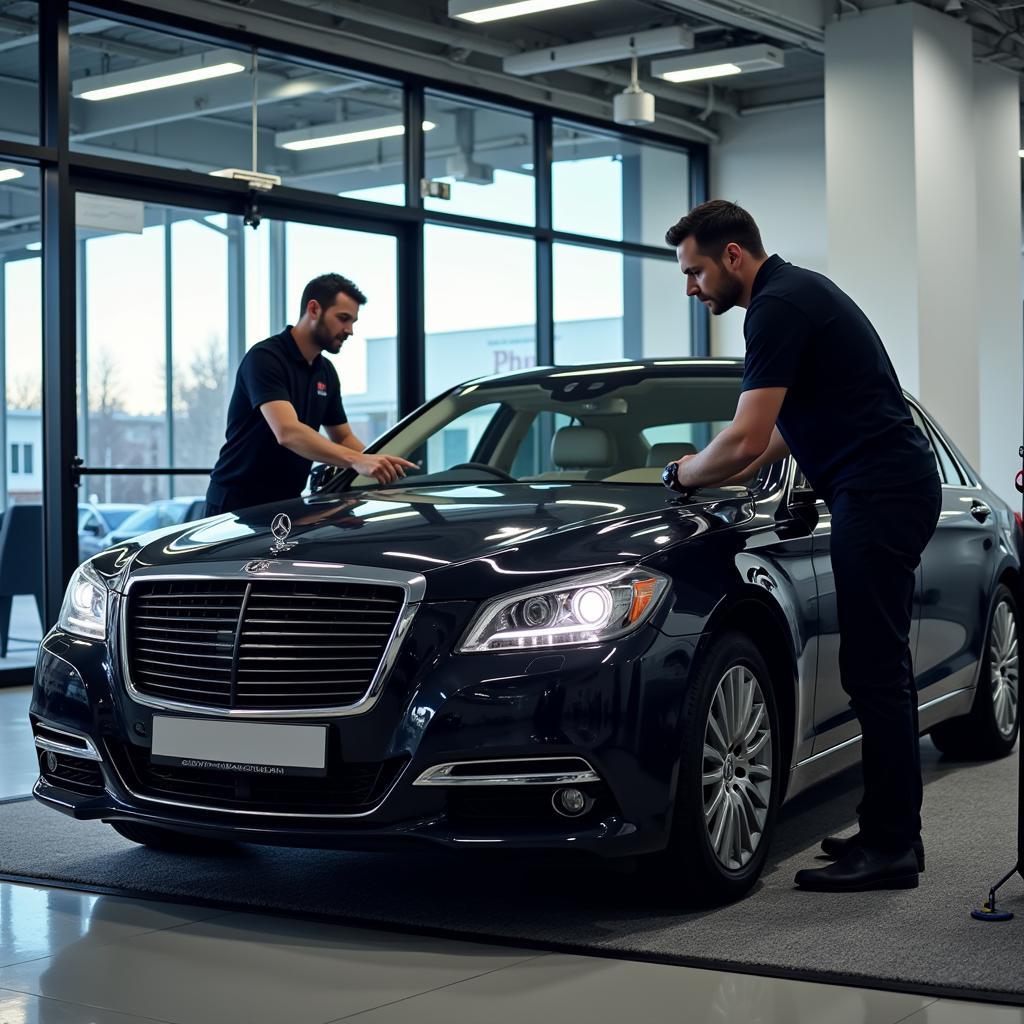A dead car radio can be a frustrating problem. You can’t listen to your favorite music, get traffic updates, or even use your navigation system. But don’t worry, there are several things you can try to fix the issue. This comprehensive guide will walk you through the most common causes of a dead car radio and provide step-by-step instructions on how to troubleshoot and fix them.
Common Causes of a Dead Car Radio
Before jumping into the troubleshooting steps, it’s essential to understand the possible causes of a dead car radio. The most common culprits include:
- Fuse Issues: A blown fuse can interrupt the power supply to your radio.
- Loose or Damaged Wiring: Loose or damaged wires can also disrupt the electrical connection to the radio.
- Battery Problems: A weak or dying battery can prevent the radio from receiving enough power to function.
- Radio Malfunction: The radio itself might have a component failure or internal problem.
- Antenna Issues: A broken or loose antenna can prevent radio signal reception.
Troubleshooting Your Dead Car Radio
Now that you have a general understanding of the potential causes, let’s get started with troubleshooting.
1. Check the Fuses
- Locate the fuse box: Your vehicle’s fuse box is typically located under the dashboard, in the engine compartment, or in the trunk. Refer to your owner’s manual for the exact location.
- Find the radio fuse: The radio fuse is usually labeled, but you can also consult the owner’s manual for the correct fuse designation.
- Inspect the fuse: Look for signs of a blown fuse, such as a broken filament or a melted wire.
- Replace the fuse: If you find a blown fuse, replace it with a fuse of the same amperage rating.
Pro tip: “Make sure you use a fuse with the correct amperage rating, otherwise you could damage your car’s electrical system,” suggests William Thompson, a seasoned automotive technician with over 20 years of experience.
2. Inspect the Wiring
- Locate the radio wiring harness: This is the cable that connects the radio to the vehicle’s electrical system.
- Examine the wiring: Look for any loose connections, broken wires, or signs of corrosion.
- Tighten loose connections: Gently tighten any loose connections to ensure a secure connection.
- Repair damaged wires: If you find any damaged wires, you’ll need to repair or replace them.
Pro tip: “When working with electrical wiring, it’s crucial to disconnect the battery to avoid electrical shocks,” advises Emily Rodriguez, an automotive expert specializing in electrical systems.
3. Test the Battery
- Use a voltmeter to test the battery voltage: A healthy car battery should have a voltage of around 12.6 volts when the engine is off.
- Charge or replace the battery: If the battery voltage is low, charge it with a battery charger. If the battery is old or damaged, you may need to replace it.
Pro tip: “Don’t jump-start your car if the battery is completely dead. Doing so can damage your electrical system,” says David Miller, a seasoned automotive repair professional.
4. Consider the Radio Itself
- Check for any obvious damage: Look for physical damage to the radio, such as cracks, dents, or water damage.
- Try resetting the radio: Some radios have a reset button. Consult your owner’s manual for instructions.
- Test the radio in another vehicle: If possible, try plugging the radio into another vehicle to see if it works. If it works in another car, the issue is likely with your vehicle’s electrical system or wiring.
Pro tip: “If you suspect a problem with the radio itself, it’s best to consult a qualified automotive technician for diagnosis and repair,” suggests William Thompson.
5. Check the Antenna
- Inspect the antenna: Look for any damage to the antenna, such as bent or broken parts.
- Ensure the antenna is properly connected: Check that the antenna is securely attached to the radio.
- Adjust the antenna: Sometimes, simply adjusting the antenna can improve reception.
Pro tip: “If the antenna is damaged, it’s a good idea to replace it with a new one,” advises Emily Rodriguez.
Conclusion
A dead car radio can be a frustrating problem, but it’s not always an insurmountable challenge. By carefully following these troubleshooting steps, you can often identify and fix the issue yourself. If you encounter a problem you’re unable to resolve, don’t hesitate to consult a qualified automotive technician.
For more in-depth assistance and professional solutions, reach out to us at AutoTipPro! We offer comprehensive automotive services, including electrical repairs, diagnostics, and troubleshooting.
Contact us today at +1 (641) 206-8880 or visit our office located at 500 N St Mary’s St, San Antonio, TX 78205, United States.
FAQ
Q: Can I fix a dead car radio myself?
A: Yes, you can often fix a dead car radio yourself by following the troubleshooting steps outlined above.
Q: What should I do if the fuses are all good?
A: If the fuses are intact, it’s time to inspect the wiring, check the battery, and consider the possibility of a radio malfunction.
Q: How can I tell if the radio is the problem?
A: You can test the radio in another vehicle to see if it works. If it does, the issue is likely with your car’s electrical system.
Q: What if I’ve tried everything and the radio still doesn’t work?
A: If you’ve exhausted all the troubleshooting steps and the radio remains dead, it’s best to seek professional help from a qualified automotive technician.
Q: How often should I check my car’s fuses?
A: It’s a good idea to check your car’s fuses at least once a year or whenever you notice any electrical problems.





Leave a Reply